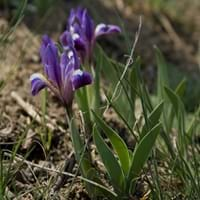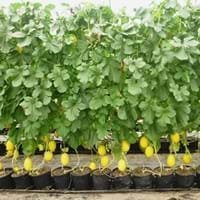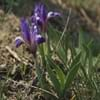Life Span
Perennial
Annual
Origin
World, Pandemic, North America, Europe, Africa, Asia
Hybrid origin, Africa
Types
Alizes
Bumblebee Deelite
Maui Moonlight
Langport Wren
Sarah Taylor
Titan's Glory
Thornbird
Jane Phillips
Orinoco Flow
Fonzy melon
Number of Varieties
Not Available
Habitat
gardens, Hillside, Riverbanks, Warmer regions, Wet forest
Mediterranean region, Subtropical climates, Temperate Regions, Tropical regions
USDA Hardiness Zone
Not Available
Not Available
Sunset Zone
Not Available
2a, 2b, 3a, 3b, 4, 5, 6, 7, 8, 9, 10, 11, 12, 13, 14, 15, 16, 17, 18, 19, 20, 21, 22, 23, 24
Habit
Clump-Forming
Vining/Climbing
Minimum Height
Not Available
Minimum Width
Not Available
Flower Color
White, Yellow, Blue, Purple, Orange, Pink, Rose, Coral, Peach, Burgundy, Lavender, Plum, Orange Red, Dark Salmon, Bronze, Chocolate, Black
Yellow
Flower Color Modifier
Bicolor
Bicolor
Fruit Color
Not Available
White, Yellow, Gold, Tan, Sandy Brown
Leaf Color in Spring
Not Available
Green, Light Green
Leaf Color in Summer
Not Available
Green, Light Green
Leaf Color in Fall
Not Available
Green, Light Green
Leaf Color in Winter
Light Green
Light Green
Leaf Shape
Long Linear
Oval
Plant Season
Not Available
Summer, Fall
Sunlight
Full Sun, Partial Sun
Full Sun
Growth Rate
Medium
Very Fast
Type of Soil
Clay, Loam, Sand
Loam
The pH of Soil
Acidic, Neutral, Alkaline
Neutral
Soil Drainage
Well drained
Well drained
Bloom Time
Not Available
Indeterminate
Tolerances
Drought
Drought
Where to Plant?
Ground, Pot
Container, Ground
How to Plant?
From Rhizomes, Stem Planting
Seedlings, Transplanting
Plant Maintenance
Medium
Medium
Watering Requirements
Does not require lot of watering, Keep ground moist, Water when soil is dry
Water Deeply, when new, water every week
In Summer
Lots of watering
Lots of watering
In Spring
Moderate
Moderate
In Winter
Average Water
Average Water
Soil pH
Acidic, Neutral, Alkaline
Neutral
Soil Type
Clay, Loam, Sand
Loam
Soil Drainage Capacity
Well drained
Well drained
Sun Exposure
Full Sun, Partial Sun
Full Sun
Pruning
Remove dead leaves, Remove dead or diseased plant parts, Requires very little pruning
Remove damaged leaves, Remove dead branches, Remove dead leaves
Fertilizers
All-Purpose Liquid Fertilizer
All-Purpose Liquid Fertilizer
Pests and Diseases
Bacterial Diseases, Fungal Diseases, Viruses
Red blotch
Plant Tolerance
Drought
Drought
Flower Petal Number
Single
Single
Foliage Texture
Medium
Coarse
Foliage Sheen
Matte
Matte
Attracts
Bees, Butterflies
Not Available
Allergy
Asthma
Asthma, Eczema, Headache, Itchy eyes, Sore eyes
Aesthetic Uses
Beautification, Showy Purposes
Not Used For Aesthetic Purpose
Beauty Benefits
Not Available
Improve skin condition, Skin Problems
Environmental Uses
Air purification
Air purification
Medicinal Uses
No Medicinal Use
Antioxidants, Diabetes, Eye Problems, High blood pressure, Nutrients
Part of Plant Used
Flowers, Leaves, Rhizomes, Root
Fruits
Other Uses
Making Perfumes, Oil is used for aromatherapy, Used as a sedative, Used as essential oil
Employed in herbal medicine, Used As Food
Used As Indoor Plant
No
Yes
Used As Outdoor Plant
Yes
Yes
Garden Design
Bedding Plant, Cutflower, Mixed Border, Rock Garden, Wall
Edible, Fruit / Fruit Tree, Herb / Vegetable, Vine
Botanical Name
IRIS
CUCUMIS melo 'Amy'
Common Name
Iris
Canary Melon
In Hindi
Iris
कैनरी तरबूज
In German
Iris
Canary Melon
In French
Iris
Melon Canaries
In Spanish
Iris
Melón Canarias
In Greek
Ίρις
Κανάριοι Πεπόνι
In Portuguese
Íris
Canary Melon
In Polish
Irys
Canary Melon
In Latin
Iris
Canary cucumis
Phylum
Tracheophyta
Streptophyta
Class
Liliopsida
Magnoliopsida
Order
Asparagales
Cucurbitales
Family
Iridaceae
Cucurbitaceae
Clade
Angiosperms, Monocots
Not Available
Tribe
Irideae
Not Available
Subfamily
Iridoideae
Not Available
Number of Species
Not Available
Season and Care of Iris and Canary Melon
Season and care of Iris and Canary Melon is important to know. While considering everything about Iris and Canary Melon Care, growing season is an essential factor. Iris season is Not Available and Canary Melon season is Not Available. The type of soil for Iris is Clay, Loam, Sand and for Canary Melon is Loam while the PH of soil for Iris is Acidic, Neutral, Alkaline and for Canary Melon is Neutral.
Iris and Canary Melon Physical Information
Iris and Canary Melon physical information is very important for comparison. Iris height is Not Available and width Not Available whereas Canary Melon height is 20.30 cm and width 120.00 cm. The color specification of Iris and Canary Melon are as follows:
Iris flower color: White, Yellow, Blue, Purple, Orange, Pink, Rose, Coral, Peach, Burgundy, Lavender, Plum, Orange Red, Dark Salmon, Bronze, Chocolate and Black
Iris leaf color: Not Available
Canary Melon flower color: Yellow
- Canary Melon leaf color: Green and Light Green
Care of Iris and Canary Melon
Care of Iris and Canary Melon include pruning, fertilizers, watering etc. Iris pruning is done Remove dead leaves, Remove dead or diseased plant parts and Requires very little pruning and Canary Melon pruning is done Remove damaged leaves, Remove dead branches and Remove dead leaves. In summer Iris needs Lots of watering and in winter, it needs Average Water. Whereas, in summer Canary Melon needs Lots of watering and in winter, it needs Average Water.





